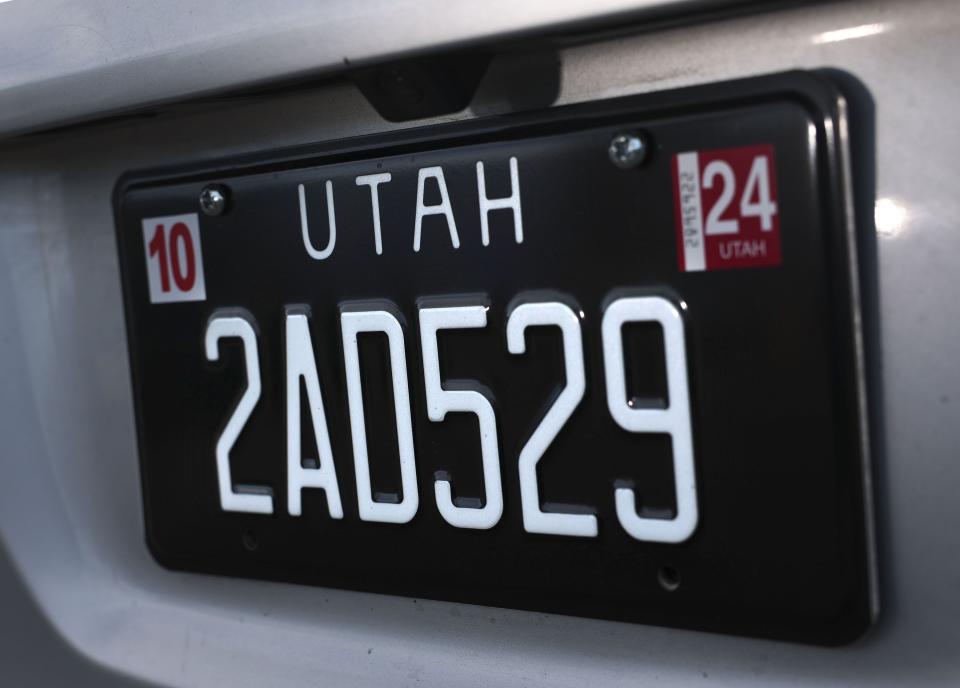Ohio is paying more students to attend private schools than ever before − thanks to a change in state law and concerted marketing from non-public schools.
Ohio has awarded more than 82,000 vouchers for private school students for the 2023-2024 school year − triple the number of scholarships doled out in previous years, according to the most recent Ohio Department of Education and Workforce data.
Vouchers account for almost half of the 170,000 students enrolled in private schools during the 2022-2023 school year. Ohio hasn’t yet released enrollment totals for the most recent school year.
The surge in vouchers happened because Ohio’s Republican-controlled Legislature took a program initially pitched as a way to help lower-income families escape troubled public schools and expanded the applicant pool to all private school students.
Meanwhile, private schools are pitching the vouchers as a “major blessing” for their budgets, encouraging current students to apply for the taxpayer-funded program. In some cases, families risked losing church subsidies or discounts if they didn’t apply for vouchers.
Proponents of universal vouchers say it’s important for parents to have a choice in where their children attend school.
“Children should never dread going to class, and parents should always have confidence that their children are walking into a positive, results-focused learning environment,” Senate President Matt Huffman, R-Lima, said after the changes were approved.
Opponents say the state shouldn’t be shelling out taxpayer money for private, oftentimes religious, education.
William Phillis, executive director of the Ohio Coalition for Equity & Adequacy of School Funding, said the concept seems even more ridiculous when you apply it to other public services.
“If I want to join a country club instead of using the public parks, I shouldn’t be entitled to a voucher to cash in at a private country club,” Phillis, a former teacher and state assistant superintendent of public instruction, said. “Or if I don’t want to swim in the public pool, I’m not entitled to a voucher to build a backyard pool at my residence.”
The debate is also the subject of a pending lawsuit in which 100 school districts sued the state to stop the private school voucher program.
What is the cost?
The Ohio Department of Education and Workforce doesn’t yet know the final cost of the state’s universal voucher program.
While lawmakers were debating the idea, the Ohio Legislative Service Commission estimated it would cost $397.8 million for the 2023-2024 school year and $439.1 million for the 2024-2025 school year. That’s still a fraction of the nearly $13 billion that Ohio spends on K-12 education in a year or $13.5 billion allocated for transportation over two years.
So far, the average amount awarded for this type of voucher has been $4,962, according to the state education department. At that rate, vouchers would cost $406.9 million for 82,000 awardees or $452.5 million if all of the 91,200 current applicants are approved.
Halfway through the school year, the state has paid out $116.9 million for this type of voucher. But determining the final cost isn’t as simple as doubling that number, an Ohio Department of Education and Workforce spokeswoman explained. More people could apply or others could leave the school or state before collecting the full sum.
It’s not yet clear how many of those vouchers went to students choosing a private school for the first time versus students already enrolled in private education. “A sizeable portion” likely came from the latter, said Chad Aldis, director of Ohio policy at the pro-voucher Thomas B. FordhamInstitute.
Each student in kindergarten through eighth grade is eligible for up to $6,165 per year or $8,407 annually for high school students.
Families with incomes at or below 450% of the federal poverty rate, which is about $135,000 for a family of four, are eligible for the full amount. Those who make more would get an increasingly smaller sum of at least $650 annually for K-8th and $950 for high school.
Opponents of the vouchers say that is money that should be allocated to public schools instead. Proponents, like Aldis, said local school districts aren’t getting shorted. “That pot was much larger because the Legislature expected EdChoice scholarships to be taken from it,” he said.
Who is getting Ohio’s vouchers?
The new rules for vouchers have also changed the demographics of who gets them.
More students of every race were awarded vouchers for the 2023-2024 school year, but white students saw the largest jump.
White students comprised 82% of EdChoice expansion vouchers for the 2023-2024 school year, compared to about 66% in recent years, according to an analysis of Ohio DEW data. Meanwhile, Black students comprised 6% of these vouchers in the 2023-2024 school year compared to 15% in previous years. Hispanic students’ vouchers were 4% of the total for the current school year compared to 8.6% in past years.
“Current private school students, until I see otherwise I will assume, were the bulk of the new applicants,” Aldis said. “If that’s the case, then you would expect them to be a little whiter, a little wealthier, whatever the general private school description would be.”
Vouchers for high school students also increased dramatically, a nearly five-fold jump from the previous school year.
What’s next?
Ohio’s Republican lawmakers are looking for more ways to help out students at non-public schools.
“Universal vouchers is kind of a halfway point for some of these voucher advocates,” Phillis said. “There’s this huge appetite on the part of some state officials to take as much money away from the public system as possible for the benefit of increasing the private school enrollment.”
Rep. Gary Click, R-Vickery, has proposed creating educational saving accounts for students at non-chartered, nonpublic schools, many of which are religious. House Bill 339 would cost about $238 million per year if all 32,000 of their estimated students obtained a savings account, according to a Legislative Service Commission analysis.
“The state should not be in the business of picking winners and losers,” Click told lawmakers in committee.
Fordham hasn’t taken a position on Click’s bill. “The question is whether it’s appropriate for state resources to flow to those schools that have opted out of all oversight,” Aldis said.
Lawmakers have also floated giving private schools money for repairs or to construct new buildings, much like their public school counterparts. Aldis said it’s worth considering if state lawmakers can figure out how state money impacts who owns the building.
Jessie Balmert is a reporter for the USA TODAY Network Ohio Bureau, which serves the Columbus Dispatch, Cincinnati Enquirer, Akron Beacon Journal and 18 other affiliated news organizations across Ohio.
This article originally appeared on Cincinnati Enquirer: Ohio’s private school vouchers swell after eligibility expansion
Signup bonus from





